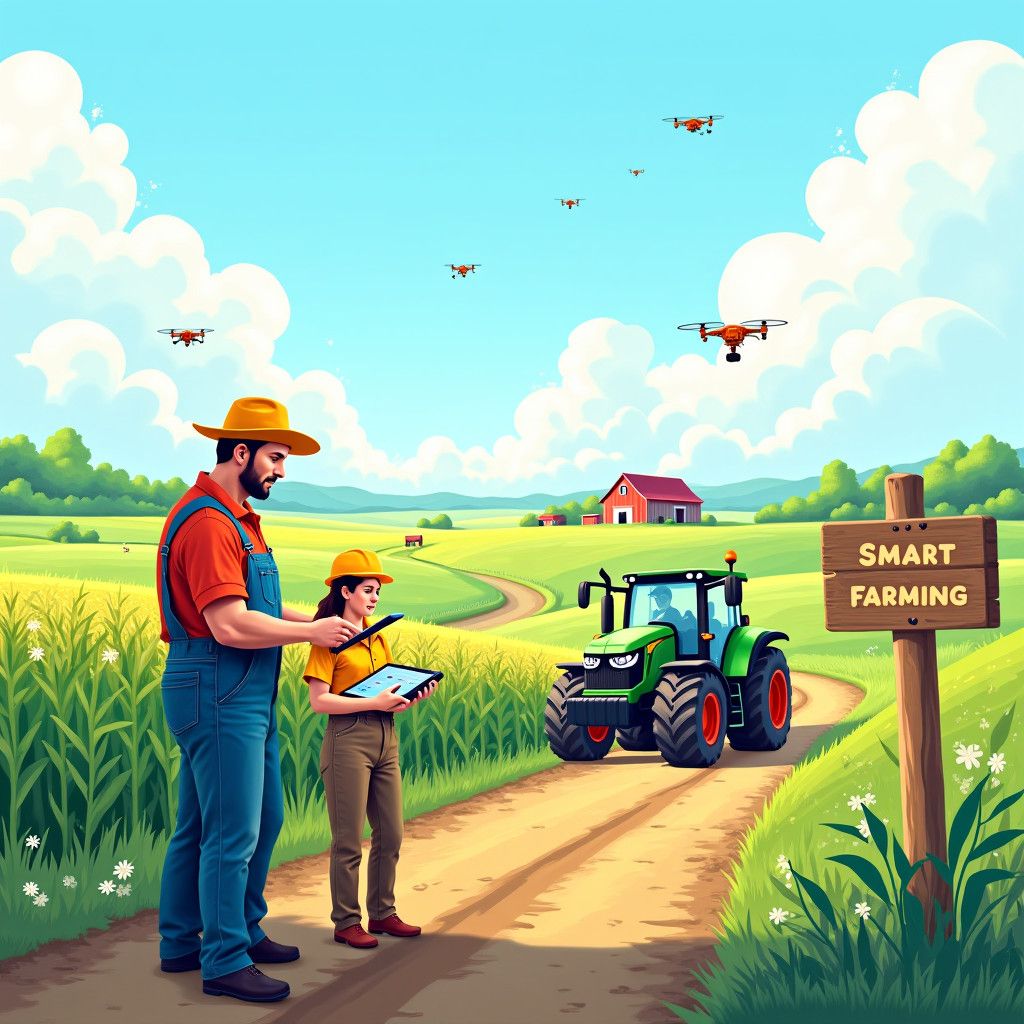The agricultural landscape in the United States is undergoing a profound transformation, driven largely by advancements in artificial intelligence (AI). As the demand for food continues to rise, farmers face unique challenges such as labor shortages and unpredictable weather conditions. In response, AI is stepping in to offer innovative solutions that enhance efficiency, productivity, and sustainability in farming practices.
One of the key areas where AI is making a significant impact is in data analytics. Farmers are increasingly using AI algorithms to analyze large datasets, which can include everything from soil moisture levels to crop yields and weather patterns. For instance, companies such as PrecisionHawk provide drone technology that collects aerial data on crop health. This data can be processed using AI to provide actionable insights, enabling farmers to make informed decisions about irrigation, fertilizers, and pest control. By adopting these technologies, farmers can optimize their resources, reduce waste, and ultimately increase their profitability.
Moreover, AI is playing a crucial role in automating various agricultural tasks, which helps mitigate labor shortages. Robotics and automation technologies are being utilized for planting, harvesting, and even monitoring crops. For example, the autonomous tractor developed by John Deere features AI-driven software that optimizes driving patterns and planting strategies, significantly reducing the need for manual labor. A study by the American Farm Bureau Federation found that automation can help farmers increase efficiency by up to 20%. This is particularly important given that many farming operations are struggling to find enough workers to meet their operational needs.
Farmers are also leveraging AI for predictive analytics. Machine learning models can analyze historical data and real-time inputs to forecast potential outcomes, such as the best times for planting and harvesting. Tools like Climate Corporation’s Climate FieldView™ platform provide farmers with critical information regarding upcoming weather patterns and planting conditions. This capability allows for better planning, which is essential in an industry where timing can dictate the success or failure of a crop season.
In addition to enhancing crop management, AI is improving sustainability practices in agriculture. Technologies like AI-driven irrigation systems utilize real-time data to determine the precise amount of water needed for crops, effectively conserving water resources. For instance, companies like CropX employ soil sensors and AI algorithms to monitor soil health continuously, ensuring that water is used efficiently. According to the Nature Conservancy, optimizing irrigation with AI can lead to water savings of up to 30%, which is a significant benefit considering the increasing water scarcity issues across the country.
However, the integration of AI in farming is not without its challenges. Access to technology and knowledge gaps among farmers can hinder the widespread adoption of these innovations. To address this, programs and initiatives aimed at educating farmers about AI technologies are crucial. Organizations such as the USDA’s National Institute of Food and Agriculture are working to provide resources and training to ensure that farmers can effectively utilize AI tools.
The economic implications of AI in agriculture are substantial. According to a report by McKinsey, AI could contribute an additional $1 trillion to the agriculture sector by 2030. This potential growth underscores the importance of fostering an environment where technology adoption is encouraged and supported. Financial incentives, government grants, and partnerships with tech firms can help facilitate the transition to AI-integrated farming practices.
As we move forward, the relationship between agriculture and technology will continue to evolve. The future of farming undoubtedly lies in embracing these innovations that enhance productivity and sustainability. With AI leading the charge, farmers have the potential to not only meet the growing food demand but also innovate in ways that promote environmental stewardship and economic resilience.
In conclusion, the integration of artificial intelligence into US farming represents a significant shift in how food is produced. By leveraging data analytics, automation, and predictive modeling, farmers can overcome labor challenges, make informed decisions, and practice sustainable agriculture. Continued investment in technology and education will be key to ensuring that these advancements benefit all agricultural stakeholders.












